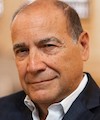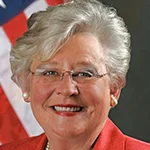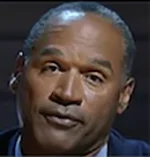 |
| Frank Marino |
PR professionals frequently find ourselves making a case for the powerful influence of earned media in the form of general news coverage, especially as it contrasts with the power of paid placements.
True, all credible public relations agencies will vouch for the overarching value of integrated marketing strategies that weave together a smart mix of earned, paid and owned platforms.
Yet, even so, this year’s presidential primary—especially over the three-day period between the South Carolina primary on Saturday, Feb. 29 and Super Tuesday on March 3—provides an unusually cogent illustration of the persuasive impact of conventional news coverage.
The point is borne out by Joe Biden’s uncanny electoral performance during this period, especially considering the dramatic gap in ad spending by Biden versus that of his opponents. Simply put, Biden suddenly emerged as the national electoral frontrunner without having spent much money at all on advertising on TV or other platforms.
Spending relatively little or no money on paid ads, Joe Biden—virtually overnight—had transformed himself from fading long shot to leader of the pack. Coupling an overwhelming win in South Carolina with media coverage of two candidates who withdrew from the race and promptly endorsed Biden—Amy Klobuchar and Pete Buttigieg—the former vice president was able to ride the crest of more than 48 hours of consistently upbeat news coverage to Super Tuesday victories in 10 out of 14 states, an achievement anticipated by no one.
The Guardian called Biden’s performance “a stunning Super Tuesday surge.” The headline of Frank Bruni’s column in the New York Times said Biden had “performed a miracle” by “roaring to the front of the pack." Bruni himself reported that these few days had “brought Joe Biden back from the dead.”
The noteworthy takeaway for PR people, for now and into the future, is that Biden had pulled off this “miracle” while radically underspending his less-successful rivals on ads. And that’s precisely the message public relations providers love conveying to existing and prospective clients: don’t underestimate the power and value of earned coverage.
When it comes to demonstrating the potential disconnect between ad buys and electoral payoff, just look at these numbers:
Bernie Sanders spent $18 million on ads in all Super Tuesday states, compared with the $2.2 million bought by Joe Biden. That’s an 818-percent higher spend. Yet, as of this writing, Biden had come away with 4,562,712 Super Tuesday votes, more than 18 percent more than the 3,723,541 Democrats who had voted for Sanders.
When you combine Sanders’s ad buys with the enormous spending of Michael Bloomberg, the level of disproportion grows astronomically larger. Bloomberg and Sanders paid $67.85 for every vote they collectively garnered in Texas, compared with spending of only 77 cents per vote by Biden in his victorious primary there. And based on the most recent results from California, the Bloomberg-plus-Sanders spend-per-vote equaled $54.54, contrasted with 87 cents in spending by Biden.
Underscoring the point even further, Joe Biden spent less than $200,000 on overall advertising in Minnesota, Massachusetts, Tennessee and Alabama. Yet he won all four states. That’s quite an ROI on earned media.
It’s important not to be simplistic or disingenuous in analyzing some of these radical differences in ad-buy levels in respect to the votes they nominally help deliver. We all know that there’s a long and beefy list of relevant variables.
To name just a few, all candidates aren’t equally compelling, their platforms vary widely, they’re not equally skilled at campaign targeting and resource allocation, their level of name recognition varies, and their advertising is not of uniform quality. Plus, Bloomberg’s massive ad spend was not entirely for naught: it helped earn him a palpable presence on national candidate tote boards.
But just as it’s unwise to assume that political advertising along the lines of a Bloomberg or a Steyer strongly helps ensure victory, it’s equally wrong to underestimate the lasting potency of conventional news coverage. Look, for example, at how the Klobuchar, Buttigieg and Beto O’Rourke endorsements coursed through a brief news cycle at lightning speed.
For yet more evidence of the power of conventional news to register political impact, look no further than president Donald Trump. A national media tracking firm valued his earned media presence at $5.9 billion during 2016 alone. The President’s mastery of television has made him a ubiquitous presence capable of commanding attention along multiple narrative lines simultaneously.
The lessons here have plenty of practical usefulness for the PR world: it’s a mistake to overmagnify the power of paid advertising, and it’s also a mistake to undervalue the power of conventional media coverage—and the third-party validation it delivers.
***
Frank Marino is CEO of Marino. Based in New York with offices in Los Angeles and Boston, Marino is a full-service communications firm delivering data-driven, fully integrated strategies focused on changing perceptions, amplifying impressions and fostering high-level relationships.


 Southern governors claim they know what's best for their working class, and it's not pay raises... A Ukrainian human rights group played a key role in convincing House Speaker Mike Johnson to hold a vote to send arms to Ukraine, Israel and Taiwan... Trump Media & Technology Group blames short-selling and not lousy outlook for its stock slump.
Southern governors claim they know what's best for their working class, and it's not pay raises... A Ukrainian human rights group played a key role in convincing House Speaker Mike Johnson to hold a vote to send arms to Ukraine, Israel and Taiwan... Trump Media & Technology Group blames short-selling and not lousy outlook for its stock slump. The techniques deployed by OJ Simpson's defense team in the 'trial of the century' served as a harbinger for those used by Donald Trump... People worry about the politicization of medical science just as much as they fret about another pandemic, according to Edelman Trust Barometer... Book bans aren't restricted to red states as deep blue Illinois, Connecticut and Maryland challenged at least 100 titles in 2023.
The techniques deployed by OJ Simpson's defense team in the 'trial of the century' served as a harbinger for those used by Donald Trump... People worry about the politicization of medical science just as much as they fret about another pandemic, according to Edelman Trust Barometer... Book bans aren't restricted to red states as deep blue Illinois, Connecticut and Maryland challenged at least 100 titles in 2023. The NBA, which promotes legalized gambling 24/7, seems more than hypocritical for banning player for placing bets... Diocese of Brooklyn promises to issue press release the next time one of its priests is charged with sexual abuse... Truth Social aspires to be one of Donald Trump's iconic American brands, just like Trump University or Trump Steaks or Trump Ice Cubes.
The NBA, which promotes legalized gambling 24/7, seems more than hypocritical for banning player for placing bets... Diocese of Brooklyn promises to issue press release the next time one of its priests is charged with sexual abuse... Truth Social aspires to be one of Donald Trump's iconic American brands, just like Trump University or Trump Steaks or Trump Ice Cubes. Publicis Groupe CEO Arthur Sadoun puts competition on notice... Macy's throws in the towel as it appoints two directors nominated by its unwanted suitor... The Profile in Wimpery Award goes to the Ford Presidential Foundation for stiffing American hero and former Wyoming Congresswoman Liz Cheney.
Publicis Groupe CEO Arthur Sadoun puts competition on notice... Macy's throws in the towel as it appoints two directors nominated by its unwanted suitor... The Profile in Wimpery Award goes to the Ford Presidential Foundation for stiffing American hero and former Wyoming Congresswoman Liz Cheney. JPMorgan Chase chief Jamie Dimon's "letter to shareholders" is a must-read for PR people and others interested in fixing America and living up to its potential... Get ready for the PPE shortage when the next pandemic hits... Nixing Netanyahu. Gaza carnage turns US opinion against Israel's prime minister.
JPMorgan Chase chief Jamie Dimon's "letter to shareholders" is a must-read for PR people and others interested in fixing America and living up to its potential... Get ready for the PPE shortage when the next pandemic hits... Nixing Netanyahu. Gaza carnage turns US opinion against Israel's prime minister.


 Have a comment? Send it to
Have a comment? Send it to 
No comments have been submitted for this story yet.